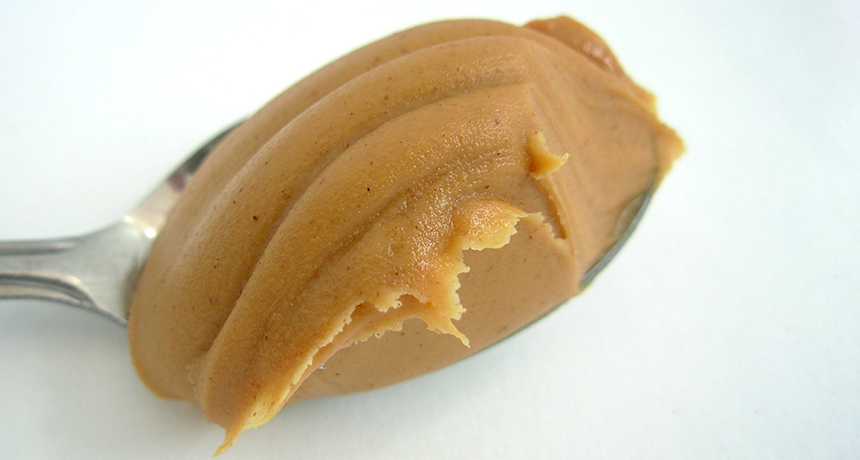Questions for ‘Cool Jobs: Puzzling over proteins to study life and death’

Protein-packed peanut butter is working as a medecine in some parts of Africa.
deborahmiller56/ Pixabay (CC0)
Share this:
- Share via email (Opens in new window) Email
- Click to share on Facebook (Opens in new window) Facebook
- Click to share on X (Opens in new window) X
- Click to share on Pinterest (Opens in new window) Pinterest
- Click to share on Reddit (Opens in new window) Reddit
- Share to Google Classroom (Opens in new window) Google Classroom
- Click to print (Opens in new window) Print
To accompany feature “Cool Jobs: Puzzling over proteins to study life and death”
SCIENCE
Before Reading:
1. Name some foods that contain protein. What are your favorites?
2. Why would scientists want to study proteins?
During Reading:
1. What type of fossil was Mary Schweitzer studying when she discovered a surprising protein?
2. Where is collagen I found in the body? What does it do?
3. Why can proteins be helpful when studying fossils?
4. What is a mass spectrometer?
5. Why is protein an important part of a nutritious diet? What happens if people don’t eat enough protein?
6. What food did Mark Manary and his team give to African kids to help them get better faster? What is the name of their project to help kids in Africa?
7. Name three important jobs of proteins within living cells.
8. Describe what goes wrong in cancer cells.
9. What is a tag (as used by the researchers in this story) and how do scientists tag proteins so that they can watch what they do?
10. What is a stem cell? What is their special role in the human body?
11. How does studying proteins help scientists understand disease?
After Reading:
1. Why is it challenging to study proteins? What are some tools that scientists use to study proteins?
2. Imagine that you could shrink down and see proteins with your own eyes. Describe what you’d like to learn. Be specific.
PUZZLES
1. Proteins are made of building blocks called amino acids. Use four different color blocks and arrange them in as many different combinations as you can. How many did you get? That’s just a small fraction of the number of possible combinations available when cells make proteins.
2. Pair up with a friend. When your friend is not looking, write down a sentence with no spaces between the words. Then cut the sentence into chunks six letters long. Trade pieces with your friend and see if each of you can put the other person’s sentence puzzle back together. How is this like the process of studying proteins?